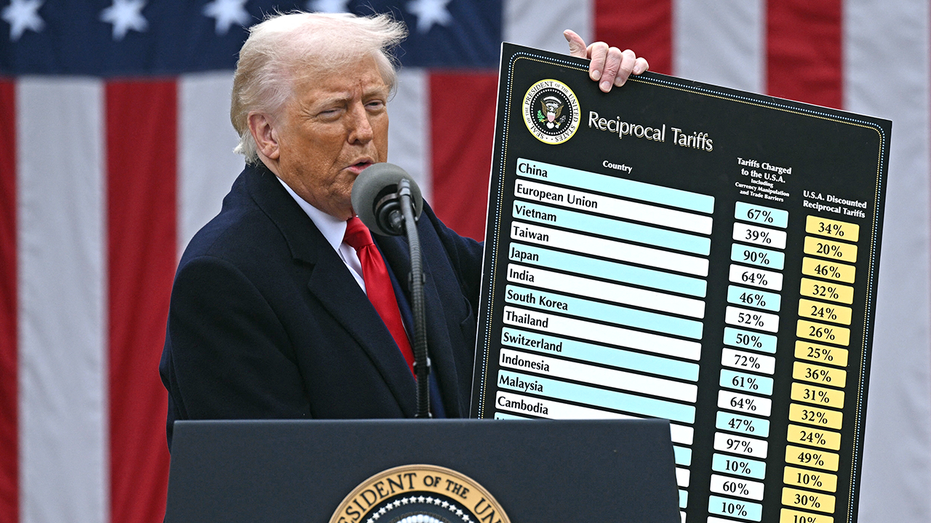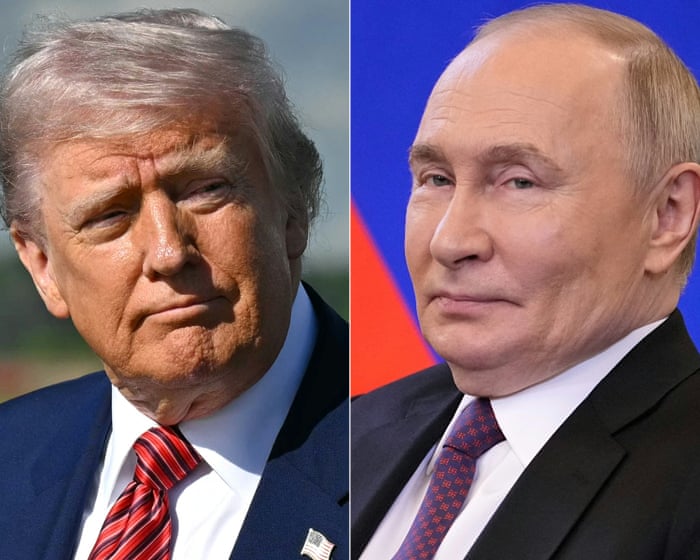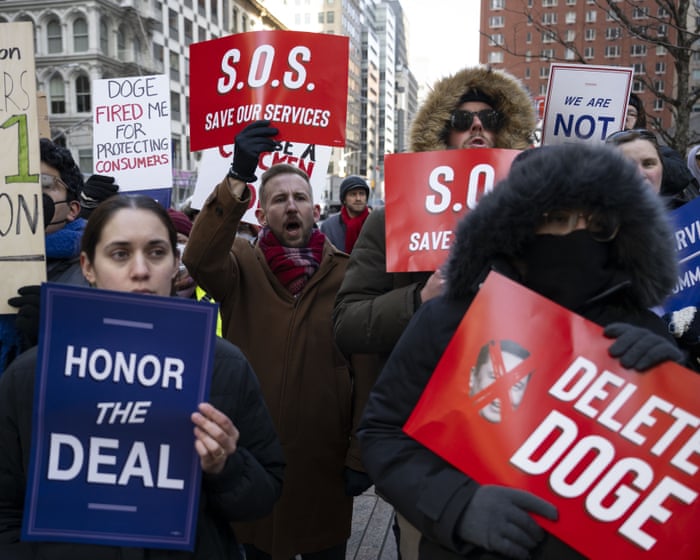See what’s trending right now
Trump administrationin U.S News
4 hours agoTrump faces legal and political challenges as the Cato Institute contests his tariff powers, while his shifting stance on Ukraine and public disputes with Putin highlight ongoing controversies.
U.S News
Tariff case pits Cato Institute against Trump over ‘unlimited’ executive power under emergency law
negativeU.S News
The Cato Institute, a libertarian think tank, is pushing back against Trump-era emergency tariffs in a new legal filing. They argue the administration abused its power by using an emergency law (IEEPA) to impose trade restrictions without proper congressional oversight, threatening the balance of power between branches of government.
Editor’s Note: This isn’t just about tariffs—it’s a bigger fight over how much authority presidents should have during "emergencies." If courts side with Cato, it could rein in future executive actions (from any administration) that stretch the limits of emergency powers. For businesses and trade, the outcome might shape how easily tariffs can be slapped on imports down the line.
Trump news at a glance: president complains about Putin’s ‘bullshit’
negativeU.S News
In a surprisingly blunt moment, former President Donald Trump aired his growing frustration with Vladimir Putin during a televised cabinet meeting, calling out the Russian leader's actions as "bullshit." He also pledged to ramp up military aid to Ukraine, signaling a tougher stance against Russia.
Editor’s Note: Trump’s outburst isn’t just another headline—it hints at escalating tensions between the U.S. and Russia, with Ukraine caught in the middle. His promise of more weapons suggests a shift in strategy, but the real question is whether this rhetoric translates into action or just adds fuel to an already volatile situation.
Why has Trump U-turned over Ukraine?
neutralU.S News
Donald Trump, who previously criticized US aid to Ukraine, has suddenly shifted his stance—appearing to support continued assistance. The article explores possible reasons for this reversal, from political strategy to shifting public opinion, without landing on a single clear explanation.
Editor’s Note: Trump’s flip-flop matters because it could signal a change in Republican priorities—or just another tactical move. With Ukraine relying heavily on Western support, mixed messages from key US figures create uncertainty at a critical moment in the war. Whether this is genuine policy shift or political maneuvering, it’s worth watching.
Trump's reversal: Pentagon to send more weapons to Ukraine after pause
neutralU.S News
After briefly freezing military aid to Ukraine last week, the Trump administration has reversed course and will now send additional defensive weapons to the country. This shift comes amid ongoing tensions with Russia and scrutiny over U.S. support for Kyiv.
Editor’s Note: This isn’t just about weapons—it’s a signal of how unpredictable U.S. support for Ukraine can be under shifting political winds. The pause and sudden restart raise questions about consistency in American foreign policy, especially when Ukraine is relying on allies to counter Russian aggression. For Kyiv, these deliveries are a lifeline, but the back-and-forth leaves everyone guessing what comes next.
Democrats see political gift in Trump’s 'big, beautiful bill'
negativeU.S News
Democrats are seizing on Trump's latest legislative push—dubbed the "big, beautiful bill"—as a golden opportunity to rally voters. They argue the bill’s cuts to Medicaid and food aid, paired with hefty tax breaks for the ultra-rich, make it an easy target to paint as harmful to working-class Americans. Essentially, they see it as a political win they can leverage in upcoming elections.
Editor’s Note: This isn’t just policy debate—it’s campaign fuel. Democrats believe the bill’s unpopular provisions give them a clear line of attack to mobilize their base and sway undecided voters. In a tight political climate, framing this as a giveaway to the wealthy while hurting everyday families could shift the narrative ahead of key races.
Trump administration takes blows from Epstein conspiracy community it once embraced
negativeU.S News
The Trump administration is facing backlash from conspiracy theorists who once championed its rhetoric, after officials dismissed claims that Jeffrey Epstein was murdered or had a secret client list. These same online communities had previously found common ground with Trump allies over fringe theories, but now feel betrayed by the administration's more measured stance on the Epstein case.
Editor’s Note: This story highlights how the Trump administration's past flirtation with conspiracy theories is now coming back to bite them. By distancing themselves from wild Epstein speculation, they're alienating a vocal part of their base—showing how tricky it is to balance fringe appeal with official credibility. It’s a messy reminder of how conspiracy culture and politics keep colliding.
Sharp drop in police killed on duty credited to Trump-driven shift away from anti-police culture
positiveU.S News
A new report shows a dramatic decline in police fatalities on duty this year—down by over 50% nationwide. The article credits this drop to a cultural shift away from anti-police sentiment, which it ties to policies and rhetoric during the Trump administration.
Editor’s Note: Fewer officers dying is objectively good news, but the framing here will likely spark debate. Supporters might see it as proof that pro-police policies work, while critics could argue it oversimplifies a complex issue (like better training or equipment playing a role). Either way, it’s a talking point in the larger conversation about policing in America.
US supreme court clears way for Trump officials to resume mass government firings
negativeU.S News
The US Supreme Court just gave the Trump administration the green light to restart large-scale federal workforce layoffs—a controversial move critics say could disrupt essential government services. The court lifted a lower court’s freeze on these firings while legal challenges play out, continuing a trend of rulings favoring the administration’s push to shrink the federal workforce.
Editor’s Note: This isn’t just bureaucratic shuffling—it’s a big deal for thousands of federal employees and the services they provide. Critics argue these layoffs could weaken everything from public health to environmental oversight, while supporters see it as trimming government bloat. Either way, the court’s decision speeds up a polarizing policy with real-world consequences.
Supreme Court allows Trump to proceed with cuts to federal workforce
negativeU.S News
The Supreme Court just gave the Trump administration the green light to move forward with its plan to shrink the federal workforce. This means the administration can start implementing job cuts across various government agencies—at least for now.
Editor’s Note: This decision is a big deal because it could affect thousands of federal employees and how government services operate. Supporters argue it streamlines bureaucracy, but critics worry it could weaken essential services and job security. Either way, it’s another flashpoint in the ongoing debate over the size and role of the federal government.
Why World Pulse Now?
Global Coverage
All major sources, one page
Emotional Lens
Feel the mood behind headlines
Trending Topics
Know what’s trending, globally
Read Less, Know More
Get summaries. Save time
Stay informed, save time
Learn moreLive Stats
Articles Processed
7,098
Trending Topics
125
Sources Monitored
211
Last Updated
4 hours ago
Live data processing
How it works1-Minute Daily Briefing
Stay sharp in 60 seconds. Get concise summaries of today’s biggest stories — markets, tech, sports, and more
Why World Pulse Now?
Global Coverage
All major sources, one page
Emotional Lens
Feel the mood behind headlines
Trending Topics
Know what’s trending, globally
Read Less, Know More
Get summaries. Save time
Stay informed, save time
Learn moreLive Stats
Articles Processed
7,098
Trending Topics
125
Sources Monitored
211
Last Updated
4 hours ago
Live data processing
How it works1-Minute Daily Briefing
Stay sharp in 60 seconds. Get concise summaries of today’s biggest stories — markets, tech, sports, and more








